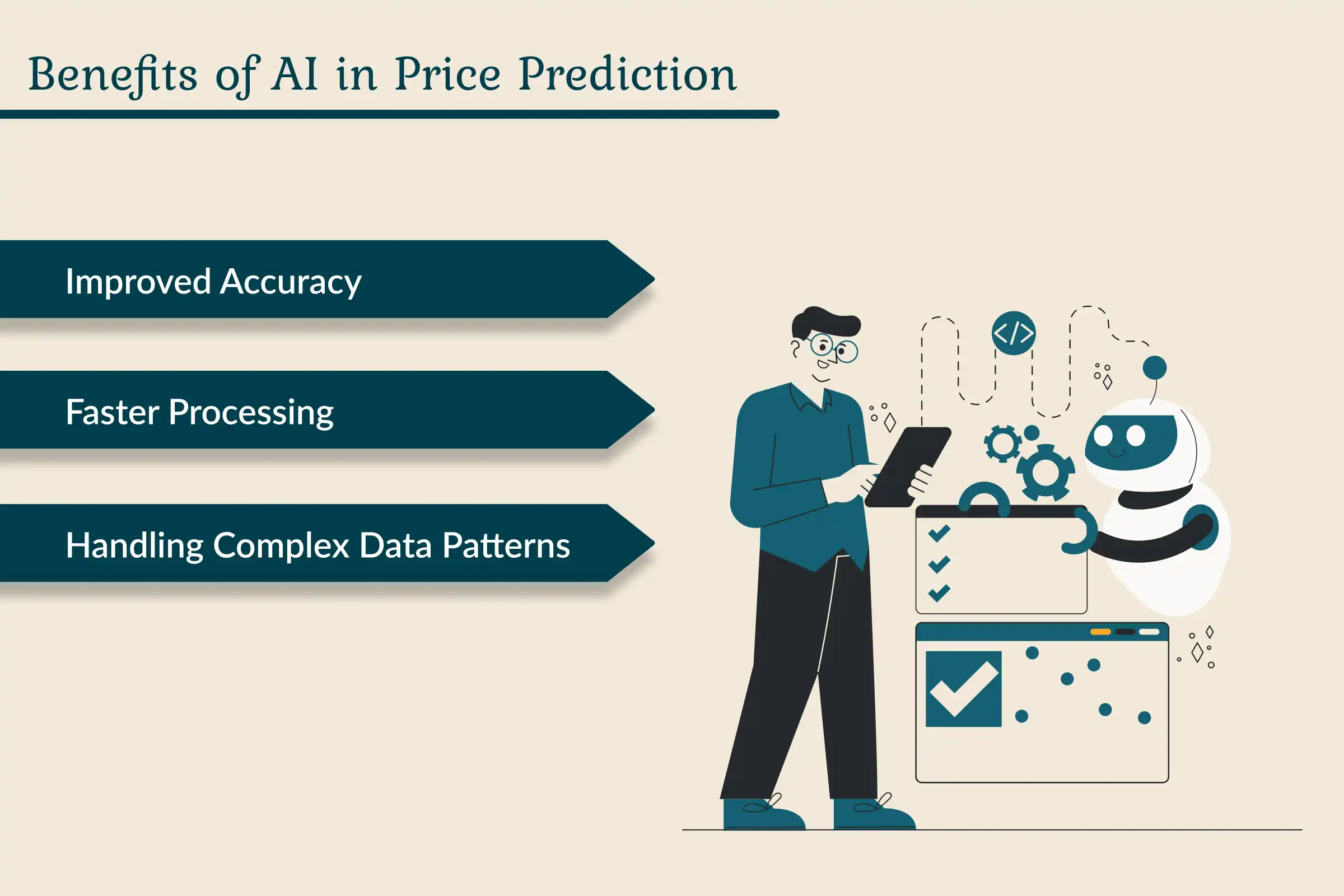The Role of Artificial Intelligence in Price Prediction

Artificial Intelligence (AI) has revolutionized various industries, and one area where its impact is increasingly significant is price prediction. In today's dynamic and data-driven world, accurately forecasting prices is crucial for businesses and investors alike. Traditional methods often fall short of capturing the complex patterns and nuances within market data. However, AI brings a new level of sophistication to price prediction, enabling businesses to make informed decisions and gain a competitive edge.
Understanding Price Prediction
Before delving into the role of AI in price prediction, it is essential to understand the importance of accurate price forecasting. Whether it's predicting stock prices, real estate values, or determining optimal pricing strategies for e-commerce platforms, accurate predictions enable businesses to optimize profitability, manage risks, and provide value to customers.
Traditionally, price prediction relied on statistical models and historical data analysis. While these methods have their merits, they often struggle to capture nonlinear patterns and adapt to rapidly changing market dynamics. This is where AI-based methods excel.
How Artificial Intelligence Works in Price Prediction
AI-based price prediction leverages sophisticated algorithms and computational power to process vast amounts of data and uncover hidden patterns. Here's a glimpse into how AI works in the context of price prediction:
Data Collection and Analysis
AI algorithms require large volumes of high-quality data for training and analysis. Various sources, such as historical price data, economic indicators, news sentiment, and social media feeds, can contribute valuable insights. By collecting and integrating diverse data sources, AI systems gain a comprehensive understanding of market dynamics.
Machine Learning Algorithms
Machine learning algorithms form the backbone of AI-based price-prediction models. These algorithms learn from historical data and make predictions based on identified patterns and correlations. Through a process of iterative learning, AI systems improve their accuracy over time, continually adapting to changing market conditions.
Neural Networks and Deep Learning
Neural networks, a subfield of AI, play a crucial role in price prediction. Deep learning, a form of neural network architecture, enables the analysis of complex, unstructured data. This includes textual data from news articles or social media posts, providing valuable insights into market sentiment and trends.
Benefits of AI in Price Prediction
The adoption of AI in price prediction offers several notable benefits over traditional methods:

Improved Accuracy
AI models excel at uncovering intricate patterns and relationships within vast amounts of data. By leveraging sophisticated algorithms, AI-based price prediction systems can achieve higher accuracy levels, enabling businesses to make more precise forecasts and informed decisions.
Faster Processing
Traditional methods often require manual data analysis and complex calculations, leading to delays in generating predictions. In contrast, AI algorithms can process vast amounts of data in real time, enabling faster and more timely predictions. This rapid processing ensures that businesses can respond swiftly to market changes.
Handling Complex Data Patterns
Markets are influenced by numerous factors, including economic indicators, geopolitical events, and consumer behaviour. AI algorithms can handle complex data patterns, including nonlinear relationships, and capture subtle correlations that may elude traditional models. This capability allows businesses to gain a more comprehensive understanding of market dynamics.
Applications of AI in Price Prediction
AI-based price prediction finds applications in various industries, including:
Stock Market Prediction
AI algorithms have made significant advancements in predicting stock prices. By analyzing historical data, news sentiment, and even social media feeds, AI models can identify trends and make predictions about future stock market movements. This helps traders, investors, and financial institutions make more informed decisions.
Real Estate Pricing
Predicting real estate prices accurately is vital for buyers, sellers, and investors. AI models can analyze historical sales data, property characteristics, location information, and market trends to provide valuable insights into property valuation. This enables buyers and sellers to make informed decisions based on accurate price predictions.
E-commerce and Dynamic Pricing
In the highly competitive e-commerce industry, dynamic pricing can give businesses a significant advantage. AI algorithms analyze various factors, such as demand patterns, competitor pricing, and customer behaviour, to optimize pricing strategies dynamically. This approach helps businesses maximize revenue while remaining competitive in a dynamic market.
Challenges and Limitations of AI in Price Prediction
While AI holds immense promise for price prediction, it also faces challenges and limitations:
Data Quality and Bias
AI models heavily rely on the quality and diversity of data. Biased or incomplete data can lead to inaccurate predictions or reinforce existing biases. Ensuring data quality and mitigating bias is crucial for AI-based price prediction systems to provide reliable and fair insights.
Ethical Considerations
The use of AI in price prediction raises ethical concerns. For example, in the case of dynamic pricing, businesses must ensure that their pricing strategies do not exploit vulnerable customer segments or engage in price discrimination. Establishing ethical guidelines and regulations is essential to address these concerns.
Interpretability and Explainability
AI models, particularly those utilizing deep learning algorithms, can be challenging to interpret and explain. This lack of transparency can hinder trust and acceptance in AI-based price prediction systems. Research into explainable AI techniques is ongoing to address this limitation.
Future Trends and Developments
The field of AI in price prediction continues to evolve rapidly. Some notable future trends and developments include:
Reinforcement Learning
Reinforcement learning, a subfield of AI, focuses on training algorithms to make sequential decisions based on rewards and feedback. Its application in price prediction could lead to more advanced and adaptive forecasting models.
Explainable AI
To address the interpretability challenge, researchers are working on developing techniques that make AI models more transparent and explainable. This would enable businesses and users to understand how AI-based price predictions are made, increasing trust and acceptance.
Integration with the Internet of Things (IoT)
The integration of AI with the Internet of Things (IoT) can provide real-time data from connected devices, enabling more accurate and dynamic price predictions. This integration has the potential to transform industries such as retail, transportation, and energy.
Conclusion
Artificial Intelligence is playing an increasingly important role in price prediction. With its ability to process vast amounts of data, identify complex patterns, and deliver accurate forecasts, AI-based systems are revolutionizing how businesses make pricing decisions. While challenges and limitations exist, ongoing research and advancements in the field are paving the way for a future where AI-driven price predictions become even more powerful and reliable.